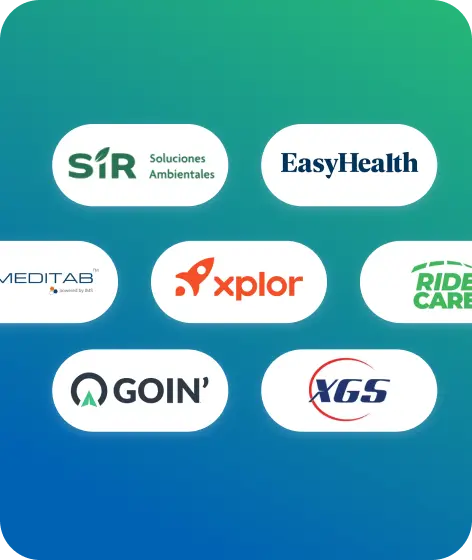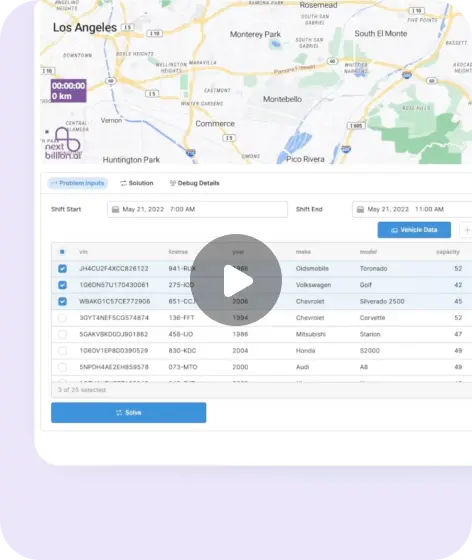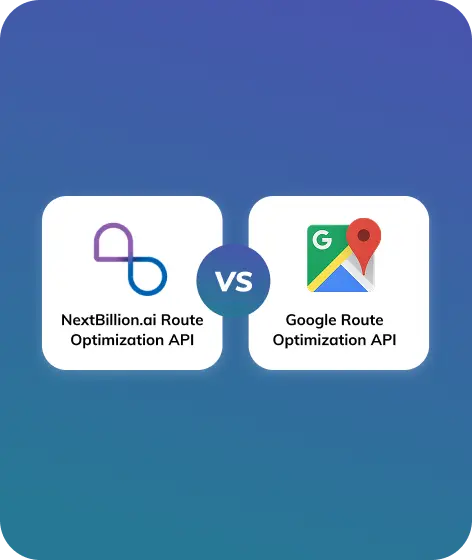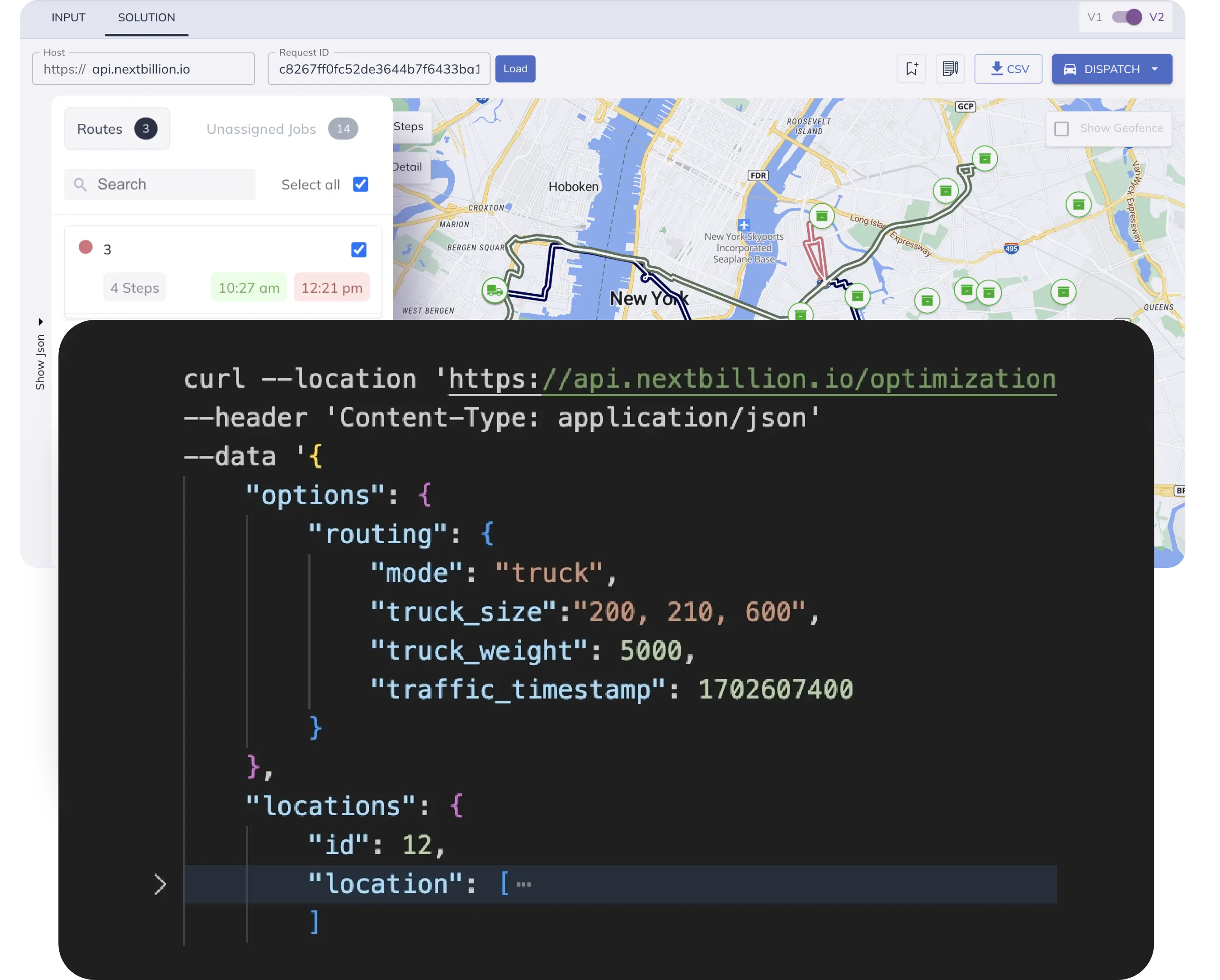Table of Contents
The 10 Best Running Route Planners (2025)
Finding the right running routes can have a big effect on how safe, fun, and effective runners are at any level. Although sometimes just walking out the door works, planning courses with route optimization tools made just for runners can be more effective — as long as you choose the right one for your needs.
This detailed article examines popular running route planners and their key elements like important features, ease of use, mapping quality, community data, and pricing models.
Evaluating Running Route Planners: Matching Platforms to Runner Profiles
The goal is to figure out how to decode each platform so that its unique strengths can be better matched to the needs of different types of runners.
Experience level: Casual runners look for different things than club runners who are trying to get better by collecting data and finding motivation to cut seconds off their best times. When it comes to this, measuring distance with great care means more.
Type of terrain: Road runners need maps that differ from trail runners who go into the remote mountain and river networks far from roads. Reviews and surface types are the most important things.
Ecosystem of gear: The difference between carrying a phone and syncing with a GPS or Apple Watch is huge. From time to time, you may need to use offline access.
Examples of travel: Running in a new city adds new safety and navigation issues that people who live there don’t think about. Social data is used to find the best places to run.
Racing goals: 5K, 10K, half marathon, and marathon runners reach their peak training periods at very different levels of speed and session length. Being able to change your route to better fit your plans is important.
Making tools for the social accountability part of solo training helps people be more consistent, which is why some apps are designed to encourage competition, whether it’s against yourself or other people, by letting you share workouts, maps, and progress.
When it comes to budget, casual users generally don’t mind paying little or nothing for a subscription, while athletes who are training hard to improve their performance are happy to pay for unlimited advanced features. Some platforms can handle niche cases pretty well, so for those that fall into such niches, it’s usually worth it.
We want to help you choose the best platform for your goals by showing you the features, use cases, and pricing for each.
Choosing the Right Running Route Planner
Selecting the right running route planner can significantly enhance your training experience, whether you’re a trail runner seeking adventurous paths or an urban runner sticking to familiar distances.
For trail runners, customizing apps to explore exciting routes away from busy streets can provide immediate benefits. Urban runners, on the other hand, might prefer apps that help them maintain consistent daily distances. Club runners, focused on performance metrics such as pace, heart rate, power, and cadence, may look for apps that provide detailed analytics, even if they occasionally participate in local 5Ks without needing advanced analytics.
Key factors to consider when evaluating running route planners include:
- Features: What the app offers in terms of tracking, planning, community, coaching, and reviews.
- Ease of Use: The simplicity of course planning, setting waypoints, creating loops, and exporting routes.
- Mapping Capabilities: Accuracy, detail, 3D terrain views, surface types, and limitations.
- Accessibility: Availability on mobile and web platforms, device integration, and offline usage.
- Pricing Models: Options ranging from free to freemium and paid subscriptions.
Using these criteria, running route planners can be categorized into two groups: niche solutions tailored for specific needs and versatile platforms suitable for all types of runners, even if not fully optimized for any single situation.
Runners at all levels need route planners to design courses that are safe, scenic, and suitable for training runs, long runs, and races. With numerous options available, finding the best platform for your needs might take some time. This guide evaluates popular running route planners based on key factors to help you choose the ideal tool.
The goal is to provide a balanced view of the strengths and weaknesses of each platform, allowing runners to choose the route planner that best fits their needs and budget.
For businesses that need high-precision mapping for fitness and outdoor applications, NextBillion.ai offers customizable route planning solutions that integrate seamlessly with various platforms, optimizing routes for urban and off-road environments.
Strava
Strava is the most popular running and cycling tracking and social platform, with over 95 million users worldwide. It enables users to share GPS activities, compete on segment leaderboards, join challenges, analyze performance data, and connect with a large community.
Key Features
- Integrates workouts from fitness trackers, watches, and phones.
- Segment leaderboards to compare your times with others or your own previous efforts.
- Route planning tools to create and share courses.
- Fitness challenges for motivation.
- In-depth data analysis, including heart rate zones, pace, and splits.
Pros
- Large community that provides motivation and route advice.
- Robust mobile and web apps for planning and tracking activities.
- Leaderboard competition that drives performance.
Cons
- Limited customization options for route planning.
- Primarily uses pre-recorded GPS activities.
- Important analytics and features require a Premium subscription.
Pricing
Strava offers a free version with basic analysis and limited splits. The Premium subscription, which unlocks all features, is priced at $7.99 per month or $59.99 per year.
Strava stands out as a leading global platform for tracking and training, offering community-driven motivation and comprehensive data analysis to help you reach new performance levels. By syncing activities from your phone or sports watch, you gain access to detailed insights on pace, heart rate, power, and performance across different courses and efforts.
The free plan allows you to view activities from the past six weeks. Upgrading to Premium provides access to your entire activity history and the Segment Explore tab, which highlights popular runs and lets you sort them by distance, surface, or climb difficulty to discover new routes for your next run.
MapMyRun
MapMyRun has over 45 million users and integrates seamlessly with Under Armour’s ecosystem of health and fitness apps and wearables like MyFitnessPal, Endomondo, and UA Record. It offers route recommendations based on distance, surface preference, and elevation that match your logged fitness levels.
Key Features
- Online route builder to map courses.
- Training plans ranging from 5K to marathon.
- Weather and air quality data layers.
- Track runs via Under Armour apps.
- MapMyRun MVP membership unlocks additional customization options.
Pros
- Syncs heart rate, pace, and cadence data.
- Adaptive training plans that adjust to your performance.
- Audio coaching for phone-free runs.
- Post-run analysis of routes, grades, and pacing strategy.
Cons
- Smaller community compared to competitors.
- Requires MVP subscription for custom workouts and advanced features.
Pricing
The app is free to use with limited training features. The MVP subscription, priced at $5.99 per month or $29.99 per year, enables customized workouts, route recommendations, training plans, and more.
While MapMyRun may not have the same community-driven motivation as Strava, its tight integration with Under Armour allows you to tailor your training to meet your goals. Adaptive plans automatically adjust based on your run history and fitness levels, accounting for performance, necessary rest between strenuous efforts, ideal recovery run pacing, and weekly volume targets.
The audio coaching feature provides real-time updates on pace, duration, and distance remaining through your headphones, helping you stay focused without constantly checking your watch. Distances are calibrated to your stride length, ensuring accurate guidance without the need for footpads or phone GPS connectivity.
Komoot
Komoot specializes in planning hiking, trail running, road cycling, and gravel riding tours using detailed digital maps rated by difficulty, surface types, and popularity. It offers turn-by-turn guidance through synced apps and devices.
Key Features
- Maps rated by difficulty, surface type, and steepness.
- Elevation profiles and gradients for climbs.
- Roundtrip generator for any distance.
- Offline functionality once the region is downloaded.
Pros
- Excellent planning for specific distance and elevation preferences.
- Downloadable regions for offline accessibility.
- Community-driven route advice and reviews.
Cons
- More limited route database in North America.
- Extra one-time fees for exports.
- Additional costs for region packs.
Pricing
Komoot offers a free version with limited usage. The Premium subscription is $59.99 per year, and region packs range from $3.99 to $29.99 each.
Komoot excels at planning routes that match your preferred terrain, distance, and difficulty levels. However, its limitations can be notable depending on geography. In the US and Canada, trail coverage is more concentrated in major metropolitan areas and national parks. Backpackers or ultra runners looking for remote mountain routes may need additional resources.
The positive aspect is that Komoot uses OpenStreetMap and public data, allowing users to improve the maps by adding missing trails or correcting errors. This user-driven approach means that over time, North American coverage can improve to match the platform’s European offerings.
Garmin Connect
Garmin Connect offers a comprehensive ecosystem for Garmin wearable and GPS device owners to track runs and bike rides, sync courses and workouts, analyze performance, and share activities with friends.
Key Features
- Auto-sync of activities from watches and bike computers.
- Route building based on distance and points of interest.
- Advanced workout creator with repeats and intervals.
- Adaptive training plans ranging from 5K to ultramarathon.
Pros
- Seamless integration with the Garmin ecosystem.
- Audio prompts for route guidance and pacing.
- Fitness and training load optimization for recovery.
Cons
- Requires a Garmin device to access key benefits.
- Basic third-party maps lack detail and trail coverage.
Pricing
Free for Garmin device users; no subscription required.
Garmin Connect delivers a powerful route planning experience for Garmin device owners, syncing directly to your watch or bike computer for turn-by-turn guidance during your activities. After uploading completed activities, you can review detailed data such as stride length, vertical oscillation, training load focus, and recommended recovery time.
While Garmin’s first-party topo maps offer excellent detail for route following and progress tracking, third-party map options may lack features like full-resolution satellite view, traffic avoidance, or trail network overlays. This limitation arises from Garmin’s strategy to integrate hardware with proprietary software features.
If you’ve invested in a Garmin GPS device, committing to the Garmin Connect platform becomes a logical choice to optimize your fitness tracking and data analysis across the entire lifecycle of your activities.
AllTrails
AllTrails is a popular platform for discovering new trail routes for running and hiking, supported by a community tracking over 300,000 miles of trails worldwide. It features heatmaps of popular paths, along with user-generated reviews and photos to preview conditions and difficulty.
Key Features
- Heat and terrain maps indicating the most used trails.
- Community reviews and recent condition photos.
- Advanced filters to match distance and difficulty.
- Offline route saving for areas with poor cell service.
Pros
- Excellent for finding and previewing new trails.
- Reviews from local runners provide valuable insights.
- Pro plan unlocks advanced trail filters.
Cons
- Limited planning features for urban city runs.
- Imprecise location search requires prior trail knowledge.
Pricing
Free access includes basic features. AllTrails Pro is $29.99 annually, offering offline maps, PDF printing, and an ad-free experience.
While AllTrails excels in hiking and trail running route discovery, it has limitations for on-road runners. Finding nearby paths by searching a city park or neighborhood address can be less clear compared to traditional street maps.
However, once you become familiar with a local trail system, AllTrails shines by revealing route options filtered by distance, elevation change, and current condition notes from fellow runners. Trail popularity heatmaps act as a vetting system for safer, well-established paths in remote areas.
For adventurous runners looking to explore new terrain, AllTrails’ social features help mitigate risks and uncertainties by leveraging the community’s collective experience.
Plotaroute
Plotaroute offers advanced tools for planning running, walking, and cycling routes through any terrain using an intuitive browser-based editor. Customize loops, segments, and points of interest while analyzing elevation profiles in both 2D and 3D.
Key Features
- Click map nodes to build a route path.
- View elevation gain and segments.
- Create complex loops or multi-leg journeys.
- Export GPX, TCX, and KML files.
Pros
- Intuitive point-and-click editor for customization.
- Analyze routes by distance, ascent, and checkpoints.
- Sync routes with compatible apps.
Cons
- Exporting routes requires a Premium subscription.
- Lower popularity compared to competitors.
Pricing
Basic features are free. Premium route tools are available for $3.99 per month.
Plotaroute stands out with its flexible route planning features and solid community support. Toggle between map, satellite, and traffic views within the route planner while editing checkpoints along your course. Analyze routes by total distance, climbing effort, altitude peaks, and mileage between aid stations.
Plotaroute is especially useful for ultrarunners plotting 50+ mile courses across different terrains and fueling stops. Some GPS devices auto-sync routes from the cloud dashboard, while manually loading GPX files ensures wider compatibility. This is particularly advantageous when planning running or cycling adventures abroad, as you can import GPX files into rental devices as a backup.
Runkeeper
Runkeeper helps runners track their runs, set goals, and receive audio-guided coaching on mobile devices to stay motivated and achieve fitness milestones. It integrates with music apps for seamless, phone-free tracking.
Key Features
- Create routes based on desired distance.
- Adaptive training plans from 5K to marathon.
- Bluetooth integration for music playback.
- Receive progress updates through headphones.
Pros
- Well-designed mobile apps with audio coaching.
- Training plans adapt to your performance.
- Social features to connect with friends.
Cons
- Limited terrain maps and detail.
- Requires carrying a phone on runs.
Pricing
Free basic features are available. The Premium Coaching plan costs $9.99 per month or $39.99 per year.
While long-time users may have legacy data within Runkeeper, the platform has lagged behind competitors that offer richer routing functionality, more detailed maps, and better ecosystem integration.
Runkeeper focuses heavily on the mobile experience, necessitating carrying your phone on runs to track activity and provide in-ear coaching guidance. If you prefer running without a phone or using devices like a Garmin or Apple Watch, other apps offer better native integration via Bluetooth.
However, Runkeeper’s adaptive training plans dynamically adjust based on your performance, rest, recovery, and weekly targets. This feature makes it easy to follow a guided curriculum tailored to your improving capabilities week by week.
Caltopo
Caltopo offers professional-grade altitude mapping, 3D flyovers, and turn-by-turn creation for planning hiking, trail running, cycling, and outdoor expeditions. It provides tools to analyze terrain for optimized route finding.
Key Features
- Build customizable large-format topographic maps.
- Overlay public land grids, USFS, and more.
- Analyze terrain line of sight, grade, and geography.
- Create, export, and print GPX and KML routes.
Pros
- Robust and highly customizable mapping.
- Third-party map layers like fires and snow depth.
- Mobile and desktop-friendly.
Cons
- Steep learning curve due to dense features.
- No activity upload or live tracking.
Pricing
Caltopo offers a generous free tier. The Premium plan starts at $29.99 annually, unlocking additional map layers, storage, and PDF print output.
Serious outdoor athletes have long relied on traditional paper USGS quad topographic maps for adventure route planning and emergency navigation. Caltopo provides next-generation digital enhancements sought after by search and rescue responders, as well as backcountry explorers who require the highest quality terrain mapping and analysis.
Features like viewshed shading reveal visible terrain from specified elevations, a vital tool for planning routes with scenic vistas or avoiding densely wooded areas prone to wildlife encounters. While the learning curve is steep due to the platform’s extensive analytical depth, mastering Caltopo rewards users with unparalleled route planning capabilities made possible through decades of cartography expertise digitized into a versatile, hardware-independent platform.
OS Maps
OS Maps, powered by Ordnance Survey, provides official, continually updated topographic mapping and routing optimized for traversing Great Britain, including England, Scotland, and Wales.
Key Features
- Access national mapping agency data via web and mobile.
- Plot routes with live distance and ascent stats.
- Use the measure tool for Ultra race pacing.
- Sync devices to follow routes offline.
Pros
- Best-quality digital mapping of UK trails.
- Ability to create, export GPX, and print routes.
- Ideal for self-navigated challenges like UK ultras.
Cons
- Focused exclusively on the United Kingdom.
- No workout data upload or activity feed.
Pricing
Free limited access is available. The Premium subscription package costs £35.
With robust public data access laws mandating governmental agencies to open up their mapping resources, Ordnance Survey’s OS Maps offers best-in-class topographic detail for planning challenging feats like self-supported Fastest Known Time (FKT) attempts across Britain’s ancient coast-to-coast trails.
Footpath
Footpath is a user-friendly app designed to help runners, hikers, and cyclists create and follow customized routes using a simple map interface. It offers tools to plan routes with ease and access them offline.
Key Features
- Draw routes with your finger or a stylus on the map.
- View distance and elevation gain instantly.
- Save and share routes with others.
- Access offline maps and turn-by-turn navigation.
Pros
- Intuitive drawing interface for easy route creation.
- Instant feedback on distance and elevation.
- Offline maps available for remote areas.
- Suitable for various activities, including running, hiking, and cycling.
Cons
- Limited to manual route drawing, less precise than some competitors.
- Some features require a subscription.
Pricing
Footpath offers a free version with basic features. The Elite subscription, which unlocks additional features, is $4 per month or $24 per year.
Footpath Route Planner excels with its intuitive drawing interface, allowing users to trace their desired route directly on the map with a finger or stylus. This simplicity makes it easy to plan routes for running, hiking, or cycling without needing technical knowledge. The app provides instant feedback on distance and elevation, helping you gauge the difficulty and suitability of your planned route.
For adventurers heading into remote areas, Footpath’s offline maps and turn-by-turn navigation are invaluable, ensuring you stay on track even without cell service. While the app focuses on manual route drawing, which might be less precise than some competitors’ automated route planning, it makes up for this with its ease of use and versatility across different activities.
Comparison of Running Route Planner Pricing
Running route planners range from free entry-level services like Google Maps to advanced paid platforms with premium features targeting power users, athletes in training, and global adventurers. Here is a pricing comparison of some planners:
| Platform | Free Features | Paid Tiers | Price Per Year |
| AllTrails | Limited, throttled | AllTrails Pro | $29.99 |
| Caltopo | Limited area downloads | Premium Membership | $29.99 |
| Garmin Connect | Full features require a device | N/A | Free with device |
| Komoot | Limited downloads | Premium | $59.99 |
| MapMyRun | Full app access | MVP membership | $29.99 |
| Google Maps | Full functionality | N/A | Free |
| OS Maps | Limited area access | Premium subscription | £35 |
| Plotaroute | Very basic | Premium route tools | ~$48 |
| Runkeeper | Core features | Go Premium Coaching | $39.99 |
| Strava | Limited analysis | Premium Membership | $59.99 |
| Footpath | Core features | Footpath Elite | $24 |
Remember that some services charge extra fees for particular map areas or require you to purchase standalone apps for mobile devices.
Choosing the Best Running Route Planner For You
With so many route planning options available, match the critical criteria below to your usage, budget, device ecosystem, and fitness level:
| User Persona | Recommended Platforms |
| Garmin users | Garmin Connect |
| Trail runners | AllTrails, Caltopo |
| Ultra-planners | Caltopo, PlotARoute |
| UK-based | OS Maps |
| US coverage | AllTrails |
| Coaching motivation | Runkeeper, Runtastic |
| Device uploads | Strava, Garmin Connect, Komoot |
| Audio training | MapMyRun MVP, Runkeeper Go Premium |
| Goal race prep | Runtastic, Runkeeper |
| Casual use | Strava free, Komoot, Footpath, Google Maps |
| Off-road routing | MTB Project, Ride with GPS, Trailforks |
| On-street navigation | Komoot, OsmAnd, Locus Map |
Conclusion
Tracking runs and rides and reviewing rich data is invaluable. Still, thoughtful route planning takes your training and races to higher levels using specialized tools matched precisely for the task. Hopefully, this guide serves as a good starting point to selecting the best running route planner for your fitness pursuits, navigation preferences, geographic terrain, training needs, device ecosystem, and budget. You can confidently build your perfect running routes with the foundation covered here.
FAQs
What are the different route types?
Different route types include urban routes, trail routes, loop routes, point-to-point routes, and out-and-back routes. Urban routes are typically in city areas with paved roads and sidewalks, while trail routes are off-road and can include varying terrains like forests, mountains, and parks. Loop routes start and finish at the same point, point-to-point routes start and end at different locations, and out-and-back routes involve running to a specific point and returning along the same path.
What is a good running route?
A good running route is safe, scenic, and suits your fitness level and training goals. It should have minimal traffic, well-maintained paths, and clear signage. Additionally, it should include varied terrain to keep your run interesting and challenging, and have access to amenities like water fountains and restrooms.
What are the benefits of running?
Running offers numerous health benefits, including improved cardiovascular health, strengthened muscles, enhanced mental well-being, and weight management. It can also boost mood, increase energy levels, and reduce the risk of chronic diseases such as diabetes, heart disease, and certain cancers.
What are the best running routes in my area?
The best running routes in your area depend on your location and preferences. You can discover popular routes by using running route planners like Strava, MapMyRun, or AllTrails, which provide community-driven recommendations and reviews. Local parks, nature reserves, and city trails are often great places to start.
What is the best way to plan a running route?
The best way to plan a running route is to use a dedicated route planning app or website. Apps like Runkeeper, Komoot, and OS Maps offer tools to create customized routes based on distance, elevation, and terrain. You can also consider factors like safety, accessibility, and scenery. Start by mapping out a route on a platform that provides detailed maps and real-time updates, and adjust based on your preferences and goals.
Can you plan a running route on Google Maps?
Yes, you can plan a running route on Google Maps by using the “Directions” feature. Enter your starting point and destination, and select the walking option to get a route suitable for running. While Google Maps can be helpful for basic route planning, it lacks features like elevation profiles, waypoint creation, and community-driven reviews found in dedicated running route planners.
Ready to get started?
Request a DemoTable of Contents





